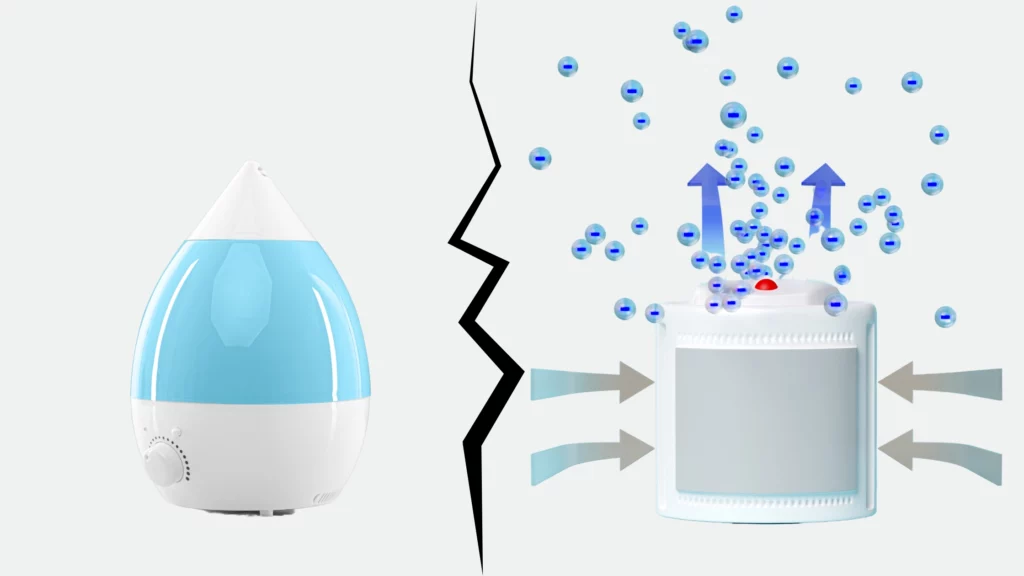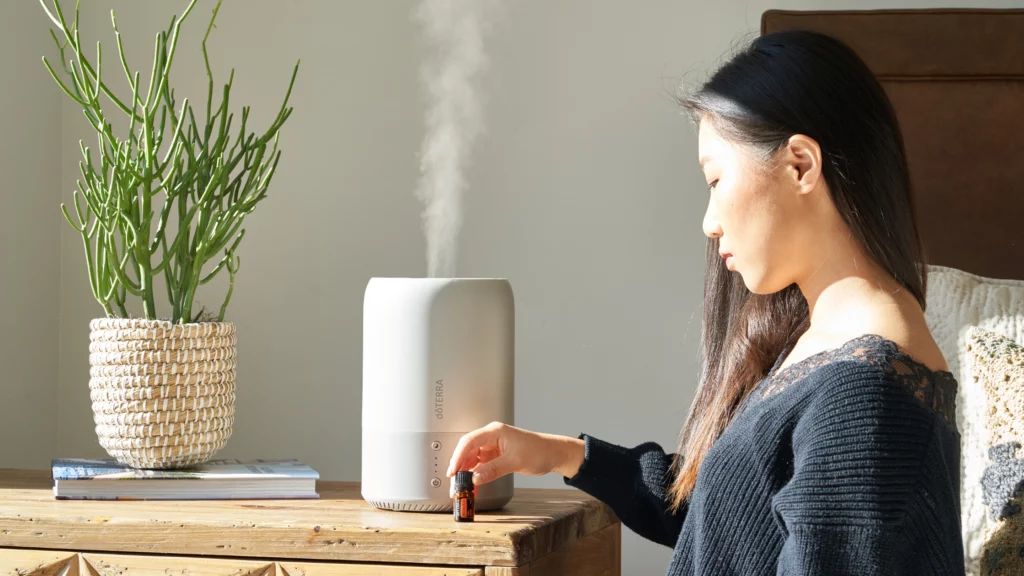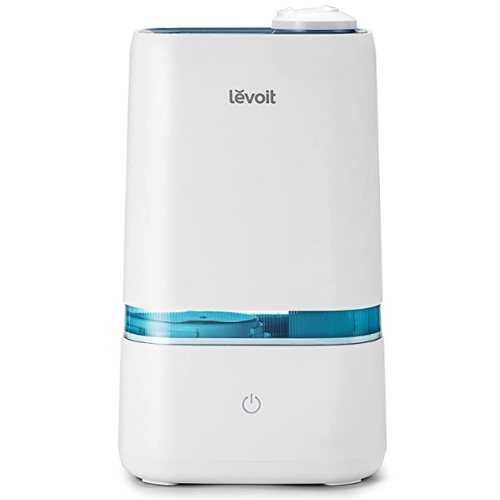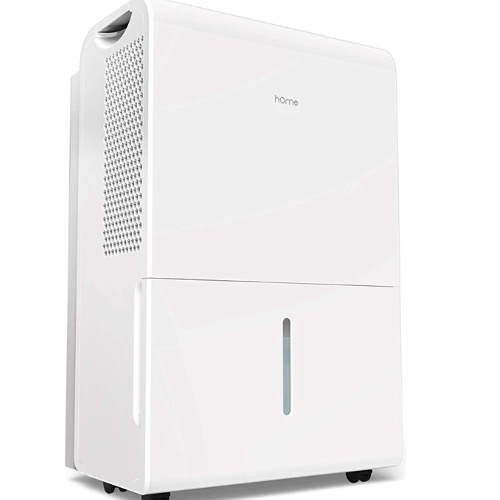Humidifier vs dehumidifier
3 Key Takeaways:
🚀 Humidifiers and dehumidifiers both work to regulate the humidity in your home, but they do so in opposite ways.
🚀 The ideal humidity range for indoor spaces is between 30% and 50%, but this can vary depending on the season and climate.
🚀 Investing in the right humidifiers and dehumidifiers will help to maintain the ideal indoor humidity level and improve indoor air quality.
Meeting the desired humidity levels for the entire house can be a challenge. Low humidity levels or high humidity levels, either of these come with their own set of troubles. Thankfully we have technology that can effectively handle both excess humidity and low humidity.
In this article, we will discuss how humidifiers work and how dehumidifiers work. Investing in the right humidifiers and dehumidifiers will help to maintain the ideal indoor humidity level and also improve indoor air quality. Let us get started by looking into the battle; Humidifier vs Dehumidifier.
How does humidity affect you?
Excess moisture in the air and environment is never good. This holds true for less moisture as well. When there is too much moisture in the environment it becomes a breeding ground for various health problems. The indoor air quality is reduced and the allergy symptoms will increase.

Dust mites are hard to get rid of from moist air and dry air, and therefore important to maintain the right relative humidity level in the entire house. Warm air and humid air are favorable conditions for mold, mildew, and other allergens to thrive. Common allergens like pet dander can also become hard to ignore in an excessively humid climate.
High humidity and low humidity can cause other health problems like dry throat and nasal passages, chapped lips, dry skin, sinus congestion, itchy skin, aggravating asthma symptoms and cold symptoms, etc. Depending on the condition of your home, you must have either a humidifier to add moisture to the air or a dehumidifier to remove excess moisture and water vapor content. Air purifiers and air conditioners are capable of influencing the relative humidity level and the indoor air quality to an extent, but cannot control the relative humidity level like humidifiers and dehumidifiers.
What is the difference between a humidifier and a dehumidifier?

When it comes to humidifiers vs dehumidifiers, it is easy to understand the difference between the two. Humidifiers add moisture to the air and dehumidifiers work to remove excess moisture. Just as there are different types of dehumidifiers, desiccant dehumidifiers (using silica gel), and electric dehumidifiers, there are also warm mist humidifiers and cool mist humidifiers. Depending on warm mist humidifiers and cool mist humidifiers, the effect and purpose of the unit when it adds moisture to the air can differ.
As much as removing moisture from the air is essential, it is also important to know why and how humidifiers add moisture to the air. When there is dry air all around you can have poor-quality of indoor air. You might see a rise in dust mites, pet dander, cold symptoms, dry skin, chapped lips, asthma symptoms, itchy skin, sinus congestion, dry throat, nasal passages, etc. To remove pollutants and prevent mold from growing into your entire house, you must invest in humidifiers and dehumidifiers based on your requirement.
When do you need humidifier?

Excessive dry air needs humidifiers. The warm mist and cool mist humidifiers work to increase the moisture in the air. The unit adds moisture or moist air. When the dry air is in excess and has a negative impact of it is evident in the environment, that is when you need a humidifier. As the humidifier increases the moisture content in the air, the relative humidity levels of the area will stabilize.
When do you need dehumidifier?

When there is too much moisture in the environment and the impacts of the humid air affect one’s health and the surrounding, that is when you require a dehumidifier. However, dehumidifiers work to prevent mold and stabilize the relative humidity levels. Maintaining the ideal relative humidity level, keeping away allergens and dust mites, and musty smells are possible with dehumidifiers.
So which humidifier should you use?
The best humidifier that has been recommended to reach the desired humidity levels is the LEVOIT Humidifier. This simple and elegant humidifier works effortlessly to add moisture to dry air.
Being one of the best cool mist humidifiers, the LEVOIT model is equipped with several beneficial features. The large 4L water tank has the capacity to humidify dry air for up to 5 nights. The size and rectangular shape of the tank are convenient to empty or add water. The one-touch control system makes it easy to select the level of cool mist to be selected. This can be opted to suit the humidity levels of the room.
The 2-in-1 humidifier and diffuser models make it possible to combine aromatherapy with humidification. The whisper-quiet and automatic shut-off feature when the tank is empty makes this unit a preferable choice when compared to other humidifiers. This is also suitable for bedrooms and the baby’s room.
Pros and Cons of LEVOIT Humidifier
- One of the best cool mist humidifiers.
- Comes with a 4L water tank that can humidity for 5 nights.
- The water tank is convenient to add and emptying water.
- Suitable choice for baby’s room and bedrooms due to its whisper-quiet operation.
- 2 in 1 humidifier and diffuser model.
- The auto shut-off feature will turn off the unit when the tank is empty.
- Has a simple one-touch control system to select the level of cool mist for releasing steam.
So which dehumidifier should you use?
A highly recommended dehumidifier for removing moisture and to remove pollutants like mold spores is the hOmeLabs 22-pint dehumidifier. This unit is an excellent choice for seamless dehumidification. It can effectively maintain the ideal relative humidity levels of any area it is placed in.
The hOmeLabs dehumidifier has a 22-pint water vapor extraction capacity and a 0.8-gallon water tank to hold the water removed. This Energy Star-certified design is ideal for a continuous 24-hour cycle. Manual and continual draining, full tank alert, Turbo mode and Normal mode for adjustable fan speed, etc., are the other features that make the hOmeLabs dehumidifier a great choice to achieve dehumidification.
Visit Amazon.com to bring home the hOmeLabs 22-pint dehumidifier at the best offer price.
Pros and Cons of hOmeLabs 22 pint Dehumidifier
- Sturdy dehumidifier with the capacity to remove 22 pints of moisture daily covering an area of up to 1,500 square feet.
- The 0.8-gallon water tank is adequate to hold the absorbed water vapor.
- Energy Star certified design.
- Equipped with beneficial features like a 24-hour cycle, continuous and manual draining, adjustable fan speed, etc.
FAQ Section
1. Do you need both a humidifier and a dehumidifier?
Both a humidifier and a dehumidifier can be used for a home depending on the existing relative humidity levels. You can use both a humidifier and a dehumidifier at the same time with the help of units that come encompassing both.
2. Do you need a humidifier or a dehumidifier for a hot room?
Humidifiers and dehumidifiers cannot give the cooling system that air conditioners provide. A humid and hot room will benefit from a dehumidifier.
3. Why can’t dehumidifiers and humidifiers be the same machine?
The process and function of humidifiers and dehumidifiers are different and therefore each is a specialist in its own respect. Depending on the level of moisture and relative humidity level of the room you will require the capacities of each unit. Neither of the units can entirely compensate for or replace the effectiveness of the other.
4. Should you use a humidifier or dehumidifier in winter?
If you were wondering which is the ideal choice for winter between a humidifier and vs dehumidifier, the answer is humidifiers. The dry air during winter is capable of reducing indoor humidity. Using a humidifier during winter can add moisture to the air.
5. Do dehumidifiers remove mold?
Yes. Some models of dehumidifiers are specifically built to remove mold and mildew. Maintaining the ideal indoor humidity level will prevent the growth and proliferation of mold, dust mites, and other allergens.
Mold thrives in excess moisture and dampness. Having an environment that is free from dampness and maintained with the ideal relative indoor humidity level will prevent mold growth.
6. Do dehumidifiers remove mold?
Yes. Some models of dehumidifiers are specifically built to remove mold and mildew. Maintaining the ideal indoor humidity level will prevent the growth and proliferation of mold, dust mites, and other allergens.
Mold thrives in excess moisture and dampness. Having an environment that is free from dampness and maintained with the ideal relative indoor humidity level will prevent mold growth.
7. Do you need a humidifier or dehumidifier for a stuffy nose?
Allergy symptoms and asthma symptoms can result from both excess or low moisture in the air. Health problems like stuffy nose, dry throat, and skin, etc., could need a humidifier or dehumidifier based on the humidity levels in the space. While humidifiers add moisture to dry air and make the air easier to breathe in, dehumidifiers will extract moisture to make the air lighter and easier to breathe in.
Wrapping Up
With this, we reach the end of this article. We trust you learned the difference between how humidifiers work and dehumidifiers operate. When it comes to humidifiers vs dehumidifiers, which is your preferred choice for your home?

About The Author
Olivia — a self-confessed air quality addict — is a home climate enthusiast, fresh air advocate, and someone with deep personal experience and knowledge about mold extermination. Her work was mentioned in countless notable humidity publications. Previously she was an editor at Mold Remediation.

